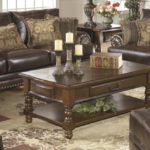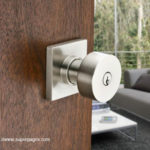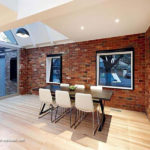The different terms that are used to describe windows can be confusing. So let’s look at French casement windows, and unpick the technical description.
Casement windows are those which open outwards from a central support. The right hand side of the window opens in a rightwards direction and the left hand side opens leftward. Until uPvC windows started becoming popular, most windows were either casement or sash types. In urban areas, sash windows were more common, because casement windows need more space to open into. Obviously, casement windows aren’t a great idea where you have a building that is directly on the street, because open casements at the bottom would be a danger to people walking along the street.
Casement windows are more popular in detached homes, or those with space outside them. When both sides of the casement are open, they allow a considerable amount of fresh air into a room, and give almost as good a view as a picture window does. What’s more, they can be used in spaces such as stairwells, as long as they are positioned with safety in mind.
How is a French casement window different?
French casement windows are also known simply as French windows. They open outwards like an ordinary casement window but they don’t have a supporting post in the middle. Anyone who has travelled through France will have seen these windows wide open and pushed right back against the walls of house, in villages and small towns.
Hundreds of different ideas for French casements
For a selection of over 250 photographs of casement and French casement windows, look at the design site, houzz.
In Dublin windows and doors vary hugely according to the age of the property and its location, according to Keane Windows (www.keanewindows.ie/). However, new French casement windows can enhance a diverse range of property types and styles. For example, they can look elegant in a period bedroom, or open up a minimalist kitchen to give a great view of the garden.








